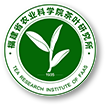Abstract:
Objective In vitro antioxidant activities of the aqueous extracts of three commercially available different kinds of tea were analyzed.
Method A traditional black tea (BT), the golden thread orchid tea (GTO), and a Lithocarpus polystachyus herbal tea (LP) were extracted with boiling water for measurements of total antioxidant activity (TAA), free radical scavenging rates (FRSR), and chemical composition. Correlations between the major physicochemical properties and antioxidant activities of the extracts were determined by Pearson analysis.
Result (1) TAAs and FRSRs of the extracts increased with increasing concentration. (2) In 30 μL of the extract, the ranking on TAA was BTE (12.25 μmol·L−1)>LPE (11.66 μmol·L−1)>GTOE (10.01 μmol·L−1); that on ABTS-FRSR, BTE (76.73%)>LPE (54.98%)>GTOE (40.26%); and that on DPPH-FRSR, LPE (50.25%)>BTE (48.04%)>GTOE (35.12%). (3) The Pearson correlation analysis showed that the antioxidant activity closely related to the polyphenol and total flavonoid contents of the extracts; the TAA and ABTS-FRSR to the polyphenols; and hydroxyl and DPPH FRSRs to the total flavonoids.
Conclusion The extracts of three different kinds of tea all exhibited in varying degrees of antioxidant and free radical scavenging abilities. Overall, BTE was the strongest and GTOE the weakest on antioxidant activity. The tea extracts varied significantly on their FRSRs due to vastly different contents of polyphenols and flavonoids.




 下载:
下载: